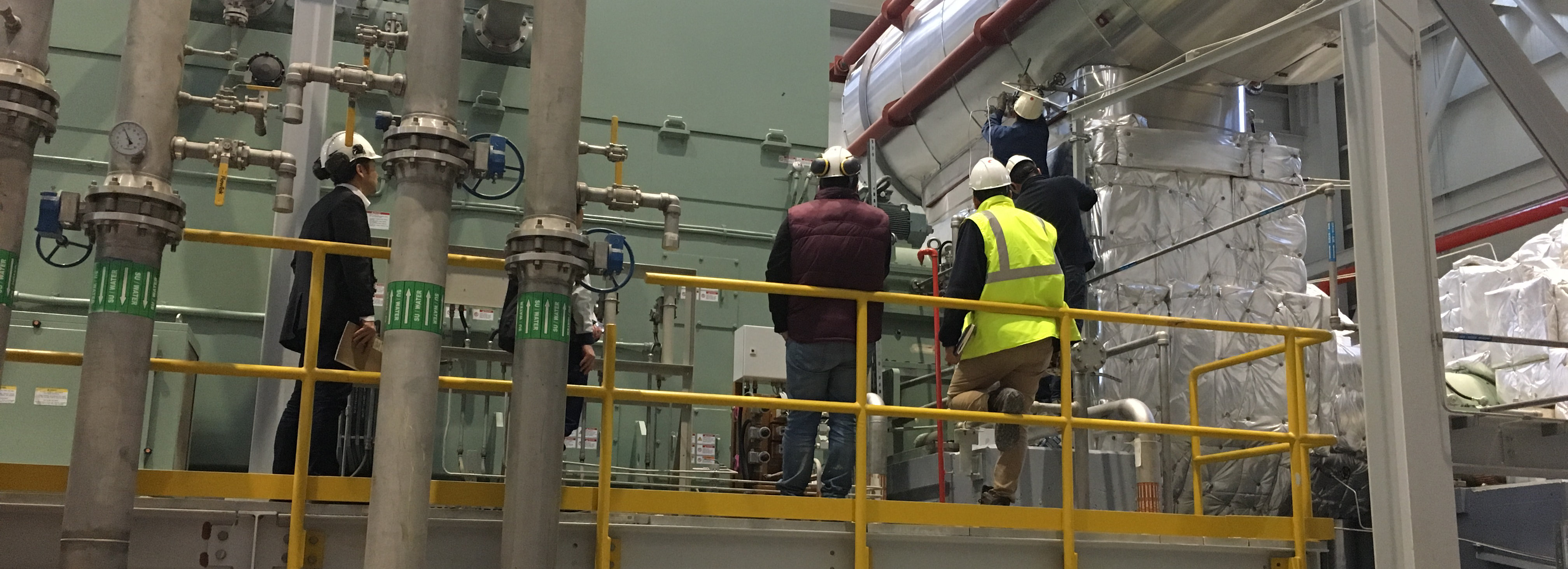Asset Management and Technical Consulting
M and A and Distressed Asset Management
Plant Improvement and Upgrade Decision Analysis
Maintenance Optimization
BOO (Build, Own and Operate) Smart Energy Solutions
EPC Production of Green Energy Power Plants
Assembly of Products and Components for Renewable Energy
Replacement Components and Parts
Equipment Repair
MIEAA’s principals and staff have provided power plant and energy facility performance services for over 30 years. Our knowledge background covers a variety of plant configurations and includes design and operational experience. We know firsthand the challenges faced in management, start-up, operations, design, and instrumentation and control. This enables us to recognize and resolve your problems with the confidence experience brings.
MIEAA strives to bridge academia, technological advancements continually, and industry practices to provide the power market with energy efficiency, maintenance optimization, and reliability engineering. We can tailor our program as required by selecting which of the following services align with the customer’s needs:
- Performance Auditing and Testing;
- Condition-based monitoring;
- Condition-based maintenance;
- Renewable energy integration;
- Anomaly detection; and
- Estimating asset remaining useful life.
Value of Third Party Auditing and Testing
As an established good industry practice, third party performance auditing and testing services implemented to demonstrate contractual performance guarantee provide many valuable points to the parties of a contract:
- Increase confidence in the audit results and test amongst the parties to the contract by removing the perception of “tipping the scales.”
- Demonstrates a program process that will readily be accepted as a good industry practice to build confidence with banking institutes, investors, and insurance companies that will be perceived as credible and independent.
- Provides a high level of internal and external transparency to all stakeholders and investors.
- Information, records, and data that form defensible positions within disputes, penalty leveraging, and Arbitrations/Lawsuits, if necessary.
- Ensures that auditing and testing is in alignment with the overall key performance indicators, management strategies, and financial goals.
In essence, allowing the delegated partner to support the auditing and testing services provides confidence of unbiased and impartial results, preventing unnecessary delays and disputes that form out of unclear intentions, thus damaging the relationship between the parties needlessly.
Asset Recoverable and Unrecoverable Degradation Management
MIEAA has the capabilities to optimize the use of the client’s existing condition monitoring system by including thermodynamic performance monitoring in the program. In our experience, thermodynamic performance monitoring is critical for organizations seeking to increase their returns from assets, maintenance & operations contracts.
The value of thermodynamic performance monitoring can be identified by looking at the underlying thermodynamic cycle of a gas turbine, including the following steps:
- Pulling in Atmospheric Air through Inlet Conditioning and Filtration
- Compression of Air by the Gas Turbine Compressor
- Addition of Fuel Energy in the Combustion Chamber
- Expansion of Hot Gasses through the Turbine to Convert the Thermal Energy to Shaft Power to turn an Alternator/Generator to Generate Power
- Exhaust of Gasses through the Gas Turbine Exhaust nozzle, Emissions Control Equipment, Heat Recovery Steam Generator and/or to an Exhaust Stack back to Atmosphere.
The basic principle of which a thermodynamic performance monitoring program addition to asset management is focusing on the reduction of the Power to Compressor, Losses, and Exhaust Energy to either reduce Fuel Input Energy or increase Power Output, or a combination of both.
The negative change in the Power to Compressor, Losses, Exhaust Energy and Auxiliary Loads and Consumption over time is associated with Degradation. Degradation comes in three forms, Recoverable, Non-Recoverable, and Permanent. Recoverable Degradation is a performance loss that can be recovered by operational procedures, without significant maintenance, such as:
- Replacing inlet filters to keep the inlet pressures low;
- Online and offline water washing of the compressor;
- Rice cleaning the compressor;
- Calibrating instrumentation to ensure control system is controlling to proper performance;
- Control system adjustments; and
- Fuel and Lube Oil Filter Replacement.
Non-Recoverable Degradation is the performance loss that cannot be recovered by operational procedures and require a repair or replacement of affected gas turbine parts during an overhaul. Examples of non-recoverable degradation include:
- Component creep or thermal ratcheting;
- Loss of surface finish on blades;
- Bearing wear which results in increased losses;
- Increases in blade tip clearances;
- Misalignment resulting in higher bearing loads and losses;
- Packing leakage of the compressor and combustion turbine;
- Combustor nozzle coking or corrosion/erosion leading to flame instabilities or increased thermal stress on the subsequent turbine sections;
- Increased parasitic loads in auxiliary systems due to malfunctions; and
- Rotor Imbalance.
Permanent Deterioration is the compilization over time of residual deterioration present even after a major overhaul. Each of these areas can be effectively tracked and analyzed to generate actionable plans of recovery and provide data points of when water washes and repairs should optimally take place so that the full economic benefit analysis can be applied to maximize profit. These principles can be seen in the below graphs for a typical gas turbine. This graphic shows the impacts of recoverable degradation in the form of online and offline water washes and the impacts of non-recoverable degradation which resulted in an overhaul.


